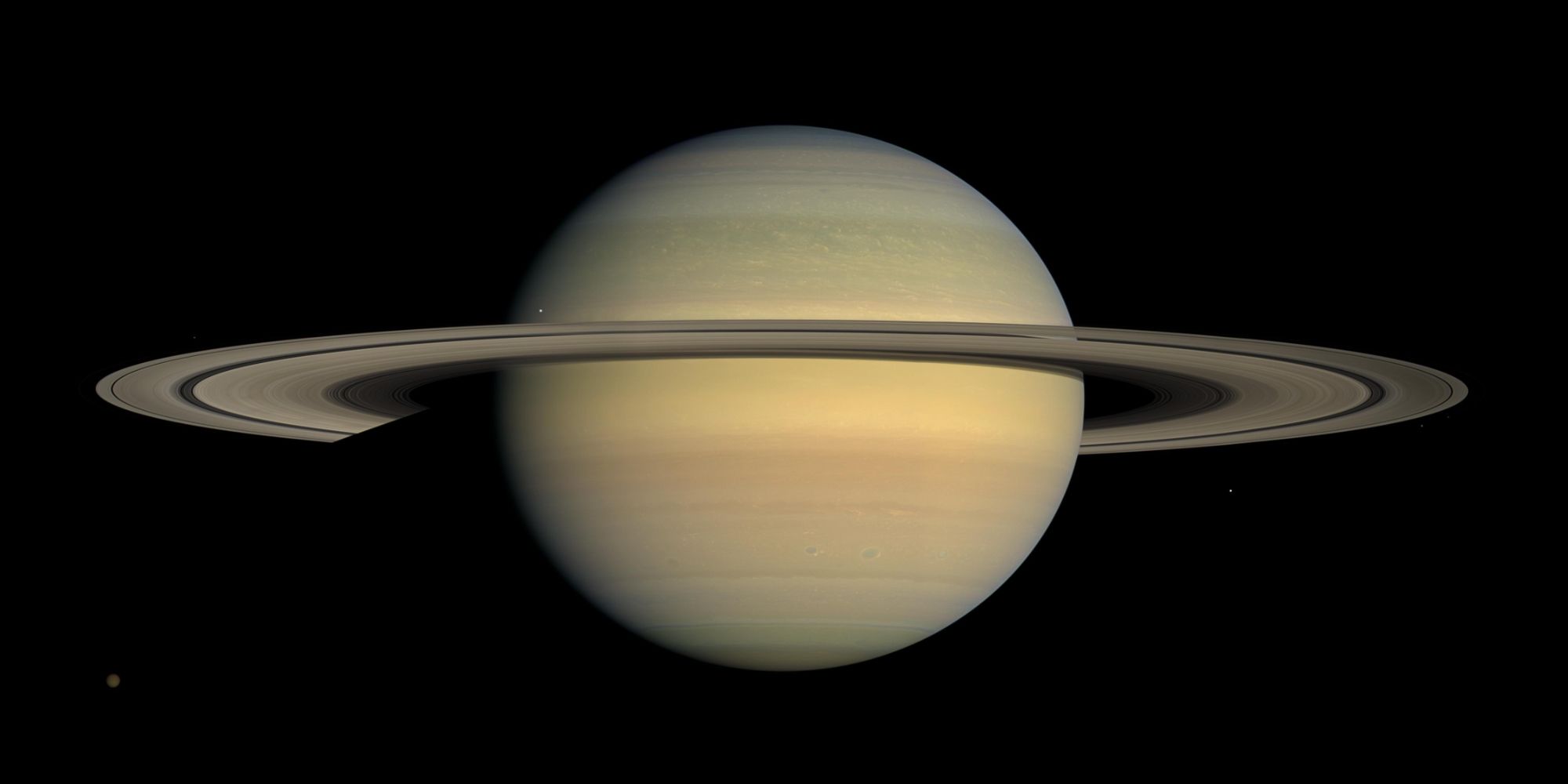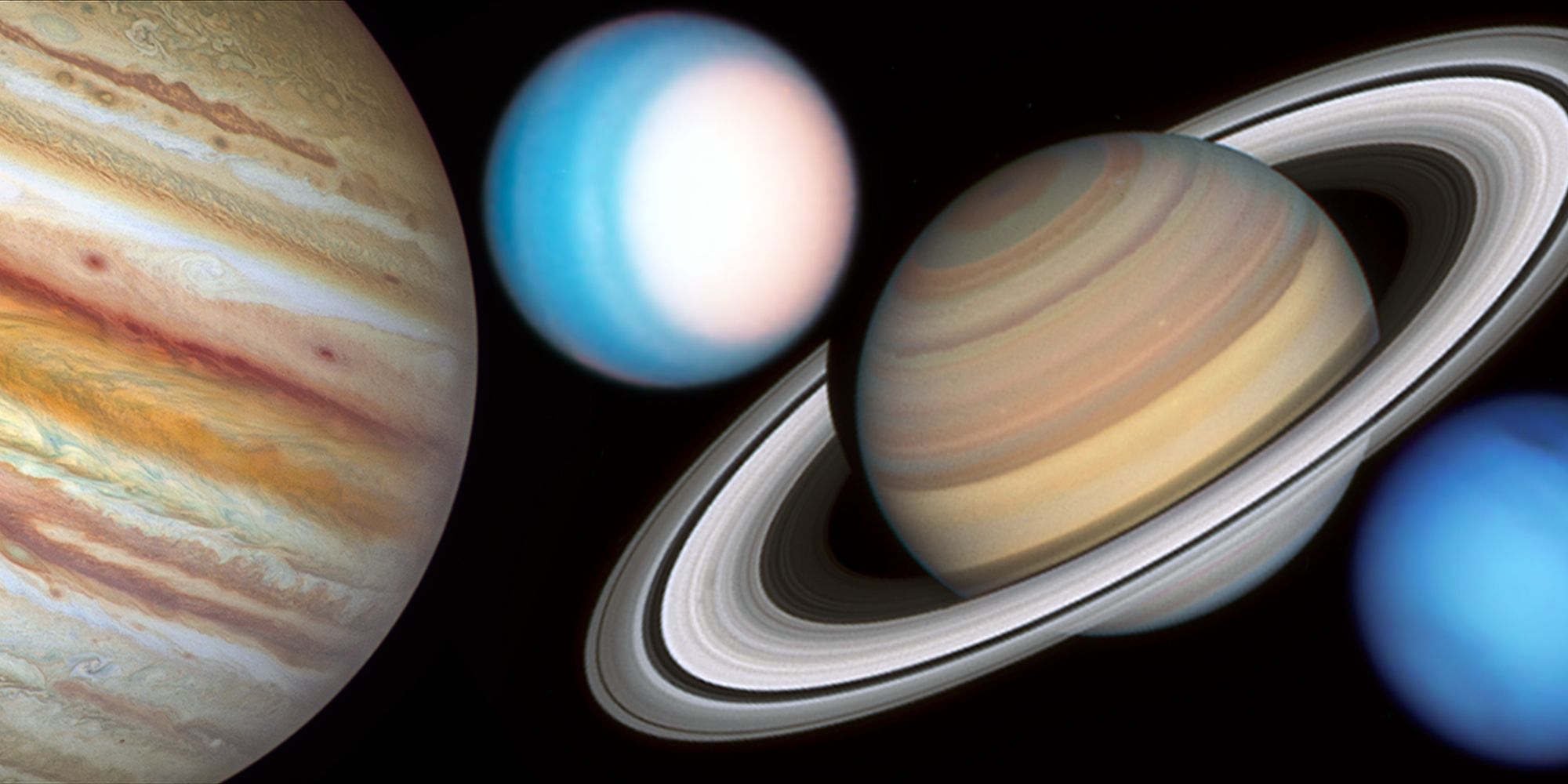Saturn is one of the most recognizable planets in the Solar System thanks to its large and icy rings — but is it the only planet with impressive space rings? Although it may just be a teeny tiny speck relative to the known universe, our home Solar System is still nothing short of fascinating. It's home to eight planets (sorry, Pluto), is 4.571 billion years old, and is around 27,000 light-years away from the center of the Milky Way.
All of those eight planets stand out for their own unique reasons. Earth, of course, is the only known planet with life. Jupiter is a massive gas giant and the biggest planet in the Solar System, Uranus' equator is set at a very distinct tilt, and Mars is believed to have once been home to some kind of ancient lifeforms. Then there's Saturn. Saturn's a gas giant similar to Jupiter and has a large 36,184-mile radius. It's the sixth planet from the Sun, has a very short 10 hour and 42-minute day, and is joined by 82 moons.
More than anything, Saturn is known for its iconic rings. First spotted by astronomer Galileo in 1610, Saturn's rings mainly consist of rocks and ice that come in a variety of sizes. These rings give Saturn an appearance unlike anything else in the Solar System — but it's not the only planet that has such rings. As NASA explains, Jupiter, Uranus, and Neptune also have rings. They aren't as big or impressive as Saturn's, but they exist regardless.
How Other Planets' Rings Compare To Saturn
Jupiter's four sets of rings were first discovered by NASA's Voyager 1 spacecraft in 1979. Unlike the bright and icy rings of Saturn, however, Jupiter's rings consist of "small, dark particles and are difficult to see except when backlit by the Sun." These particles are believed to be dust from smashed meteoroids, further explaining the rings' dim appearance.
Then there's Uranus. Uranus has just two sets of rings — including nine inner rings and two outer rings. Almost all of the nine rings closest to Uranus are very narrow and have a dark gray hue. The outer rings, however, and quite different. One has a dusty appearance similar to Jupiter's rings, while the other has a distinct blue color (not unlike some of Saturn's rings).
And, last but not least, there's Neptune. NASA says there are "at least" five main rings around Neptune and four "prominent ring arcs." These ring arcs are large clumps of dust that seemingly refuse to separate. While these clumps should normally separate and disperse throughout space, it's believed that the gravity of Neptune's Galatea moon is somehow keeping them held together.
Source: NASA


